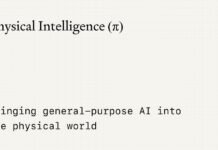In the last year, over 24 million AI agents have been used worldwide. This huge increase shows how artificial intelligence is spreading fast. It’s changing how we do tasks and make big decisions.
AI agents can change quickly to meet new challenges. They are making big changes in how companies work. Research by Lionel Sujay Vailshery shows they can learn and adapt well to new situations1.
This article will look into how many AI agents are out there. We’ll see where they are used and what it means for our work. Knowing about AI agents helps us see where technology is going and how it will help us.
Key Takeaways
- Over 24 million AI agents have been deployed globally.
- AI agents exhibit flexibility and autonomous decision-making capabilities.
- Understanding the number of AI agents helps in appreciating AI’s impact on different sectors.
- Research indicates that AI agents can improve through dynamic learning.
- As artificial intelligence advances, its industry-specific applications continue to expand.
Understanding AI Agents

Artificial intelligence (AI) includes many types of intelligent agents. Each is made to do different things. They use sensors and actuators to see and act on their surroundings.
These agents make choices on their own using special algorithms. They can work in many fields like customer service, healthcare, and finance2. Knowing how AI works is key to understanding these agents.
Definition of AI Agents
AI agents are made to work on their own. They use tech like machine learning and natural language processing3. They can take in information and make smart decisions.
They can do simple tasks or complex ones. This changes how data is used in many areas4.
Components of AI Agents
AI agents have important parts. They have percepts, or sensory inputs, and actuators for action4. Knowing how they work is essential.
They go through steps like seeing, understanding, deciding, acting, and learning. This lets them get better over time. They can make better choices in different situations2.
The Different Types of AI Agents
Knowing about the types of AI agents is key to using them well. This guide breaks down the main types. It explains how they work and their good and bad points.
Simple Reflex Agents
Simple reflex agents just react to what’s happening now. They don’t remember past events. For example, a vending machine gives you a snack when you pick one. They’re simple to make but can’t change based on past experiences56.
Model-Based Reflex Agents
Model-based reflex agents keep an internal map of the world. They use this map to make smart choices now and then. A smart thermostat is a good example. It adjusts based on current and past temperatures56.
Goal-Based Agents
Goal-based agents aim to reach specific goals. They think about what will happen next and plan. GPS systems are a great example. They find the best route to your destination56.
Utility-Based Agents
Utility-based agents try to make you as happy as possible. They look at many things when deciding. An AI investment advisor is a good example. It picks the best investment for you based on your wishes and the market56.
Learning Agents
Learning agents get better with time. They learn from their experiences and change their ways. They’re used in things like personalized ads and smart security systems. This makes them better at helping you and keeping you safe567.
How many AI agents are there?
The AI world is changing fast, with more AI agents being created all the time. It’s important to know how many there are to understand AI trends. Research shows there are five main types of AI agents: Reflex Agents, Model-based Agents, Goal-based Agents, Utility-based Agents, and Learning Agents8. These types show how diverse and complex AI agents are today.
Current Statistics and Trends
Reports say AI agents help boost productivity, improve customer service, and give insights from data9. But, using AI agents also comes with challenges like technical issues and ethical concerns. The numbers show AI is growing fast, with its use depending on what industries need and can handle.
Industry-Specific Distribution
AI agents are used differently in each industry. In healthcare, they help with diagnosis and predictive analytics. In finance, they help make investment decisions and automate customer service. For example, OtterPilot shows how AI can make meeting notes easier, improving work efficiency9. As AI technology gets better, we can expect more AI agents in more industries soon.
The Role of AI Agents in Various Industries
AI agents are changing many fields, showing how well they can solve different problems. They make things more efficient, productive, and help with making decisions in areas like healthcare, finance, retail, and manufacturing.
Healthcare Applications
In AI in healthcare, companies like Philips and GE Healthcare use AI agents to better patient care and manage data. These agents help a lot with diagnosing and managing health, making care better for patients. AI is really changing how we do medicine and care for patients.
Financial Services
The finance world is changing a lot with AI in finance. Big names like JPMorgan Chase and Goldman Sachs use AI agents for important tasks like checking risks and collecting debts. This makes decisions quicker and more efficient, cutting down on mistakes and improving productivity with tools like predictive analytics10.
Retail Automation
In AI in retail, AI agents are changing how we talk to customers. For example, WIZ.AI’s Talkbots can cut call times by up to 80%, making customer service better. These smart agents handle simple tasks, so people can deal with harder questions, making customers happier10.
Manufacturing Processes
The effect of AI in manufacturing is huge. AI agents help with predicting when things need fixing and make operations better, which saves time and boosts efficiency. This lets companies work on more creative and complex tasks that need human creativity.
As AI gets more common, more industries are using AI agents, showing they’re becoming more important. They help make things faster and more efficient, proving they’re key to innovation today11.
Challenges in Determining the Number of AI Agents
The world of AI agents is always changing, making it hard to know how many there are. A big problem is data collection in AI. Different apps and reporting ways can make stats hard to agree on. Many companies are adding AI agents, but it’s hard to keep track of how many are working.
Capgemini found that 10% of companies already use AI agents. But, over half plan to start soon, and 82% aim to do so in three years12. This makes it tough to get a clear number of AI agents in use.
Also, technological advancements in AI are moving fast. New ways to make AI agents, like Sierra’s, show how tech is getting better13. But, knowing how well these agents work is key. The best ones can succeed up to 57% of the time13.
To sum up, figuring out how many AI agents there are is tricky. It needs good data and keeping up with AI’s growth. Researchers are working on making AI agents better. They want to improve how well these agents work and what they can do13.
In the end, we need clear rules for collecting and sharing AI data. This will help us understand how many AI agents are out there and how well they work.
FAQ
How many AI agents are currently in operation globally?
What exactly are AI agents?
What are the primary types of AI agents?
How are AI agents used in the healthcare sector?
What challenges exist in estimating the number of AI agents?
How have advancements in technology influenced AI agents?
Can you explain the role of AI agents in financial services?
What sectors are experiencing the most rapid growth in AI agent integration?
Source Links
- 5 Levels Of AI Agents (Updated)
- What are AI agents, and how do they work?
- Understanding AI Agents: Types, Functions, and More
- AI Agents Explained: Revolutionising Industries and Daily Life
- What are the Different Types of AI Agents?
- What are Different Types of AI Agents? | Alltius Glossary
- AI Agents – Types, Benefits and Examples – Yellow.ai
- Agents in AI: Exploring Intelligent Agents and Its Types, Functions & Composition
- What Are AI Agents? A Guide to Types, Benefits, and Examples | Otter.ai
- The Power and Potential of AI Agents in Modern Industries
- What Are AI Agents? | Built In
- AI agents will transform business processes — and magnify risks
- AI Agents Show Huge Promise, But Face Technical Barriers to Wide Adoption







